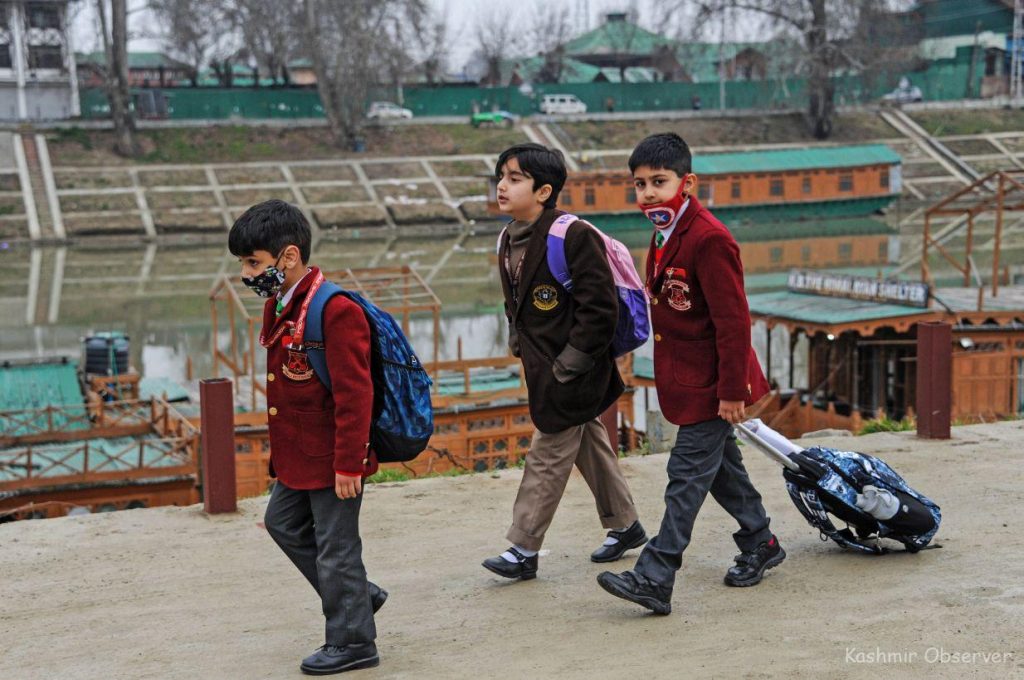
By Ikkz Ikbal
Schools in kashmir valley reopened after the winter break, precisely after 100 days.The first month is being dedicated not to traditional classwork but to the formidable realm of examinations. It’s an unconventional beginning, where students embark on a journey of assessments before delving into the routine rhythms of classroom learning.
Mathematically speaking, taking into consideration the long winter break, summer vacations , sundays and holidays, the calculation of expected working days takes on a significance that extends beyond mere numbers. In this equation of time, each day becomes a valuable unit, a brick in the foundation of knowledge that shapes the academic journey.
In Kashmir, the winter extends its icy embrace until March, and the so-called ‘winter break’ is a fluid concept, often extending beyond the initially allocated time. Harsh weather conditions, coupled with inadequate infrastructure, compel schools to remain closed even after the winter vacations have officially ended. Constructing a robust infrastructure isn’t an overnight task—it demands time, concerted effort, and financial investment.
Amidst these challenges, the change of session in Kashmir encounters limitations that must be acknowledged. The scarcity of working days during the winter months poses a considerable hurdle. The hostile weather conditions not only disrupt the regular schedule but also hamper the effective coverage of the syllabus. The consequence is that, come March, a significant portion of the curriculum remains untouched, creating a gap in the educational journey of the students.
During the extended winter vacations, students find themselves detached from their books, grappling with a break that goes beyond the intended pause. The disrupted continuity affects their academic engagement, making the transition to a summer session even more cumbersome. Holding exams in March of the following year burdens students with the challenge of revisiting material after a prolonged hiatus.
These challenges highlight the practical difficulties faced by the educational system in Kashmir, especially in the transition from winter to summer sessions. The existing constraints, both in terms of weather and infrastructure, underscore the need for an honest reevaluation of the session change. Authorities should carefully consider the implications of this transition, recognizing that the current structure imposes burdens on both students and educators.
As the schools reopen amidst the budding warmth of the summer, the call for a reconsideration of the session change becomes more pertinent than ever. It’s not merely a matter of tradition; it’s a call for adaptability and pragmatism in crafting an educational calendar that aligns with the unique challenges presented by the Kashmiri landscape. The authorities must weigh the cost of continuity against the benefits of a revised approach, fostering an educational environment that is both feasible and nurturing for the students in this breathtaking region.
There’s a plea for reconsideration echoing through the snow-capped peaks. The limitations of the existing system, from a scarcity of working days to the burden on students during exams, beckon the authorities to address these practical impediments with honesty and foresight.
The educational journey in Kashmir is not just a matter of textbooks and exams; it’s a delicate dance with nature’s elements. The call for a reevaluation of the session change is not an indictment of tradition but an invitation to adaptability. It’s a recognition that crafting an educational calendar tailored to the unique challenges of this region requires a pragmatic and thoughtful approach.
In the grand narrative of education in Kashmir, the session change is a chapter that warrants a second look—a chapter where the constraints of winter meet the promise of summer. As we traverse the landscapes adorned with the hues of changing seasons, there’s an optimism that a careful consideration of these challenges will pave the way for an educational experience that is not just feasible but truly enriching for the students who call this breathtaking valley home.
Views expressed in the article are the author’s own and do not necessarily represent the editorial stance of Kashmir Observer
The author is Administrator, Maryam Memorial Institute Pandithpora
Follow this link to join our WhatsApp group: Join Now
Be Part of Quality Journalism |
Quality journalism takes a lot of time, money and hard work to produce and despite all the hardships we still do it. Our reporters and editors are working overtime in Kashmir and beyond to cover what you care about, break big stories, and expose injustices that can change lives. Today more people are reading Kashmir Observer than ever, but only a handful are paying while advertising revenues are falling fast. |
| ACT NOW |
| MONTHLY | Rs 100 | |
| YEARLY | Rs 1000 | |
| LIFETIME | Rs 10000 | |











